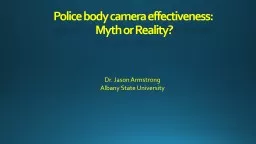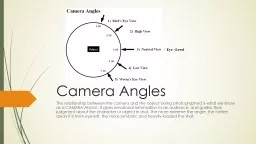PPT-Police body camera effectiveness:
Author : olivia-moreira | Published Date : 2019-11-24
Police body camera effectiveness Myth or Reality Dr Jason Armstrong Albany State University Background In the last few years there has been a national and even a
Presentation Embed Code
Download Presentation
Download Presentation The PPT/PDF document "Police body camera effectiveness:" is the property of its rightful owner. Permission is granted to download and print the materials on this website for personal, non-commercial use only, and to display it on your personal computer provided you do not modify the materials and that you retain all copyright notices contained in the materials. By downloading content from our website, you accept the terms of this agreement.
Police body camera effectiveness:: Transcript
Download Rules Of Document
"Police body camera effectiveness:"The content belongs to its owner. You may download and print it for personal use, without modification, and keep all copyright notices. By downloading, you agree to these terms.
Related Documents














